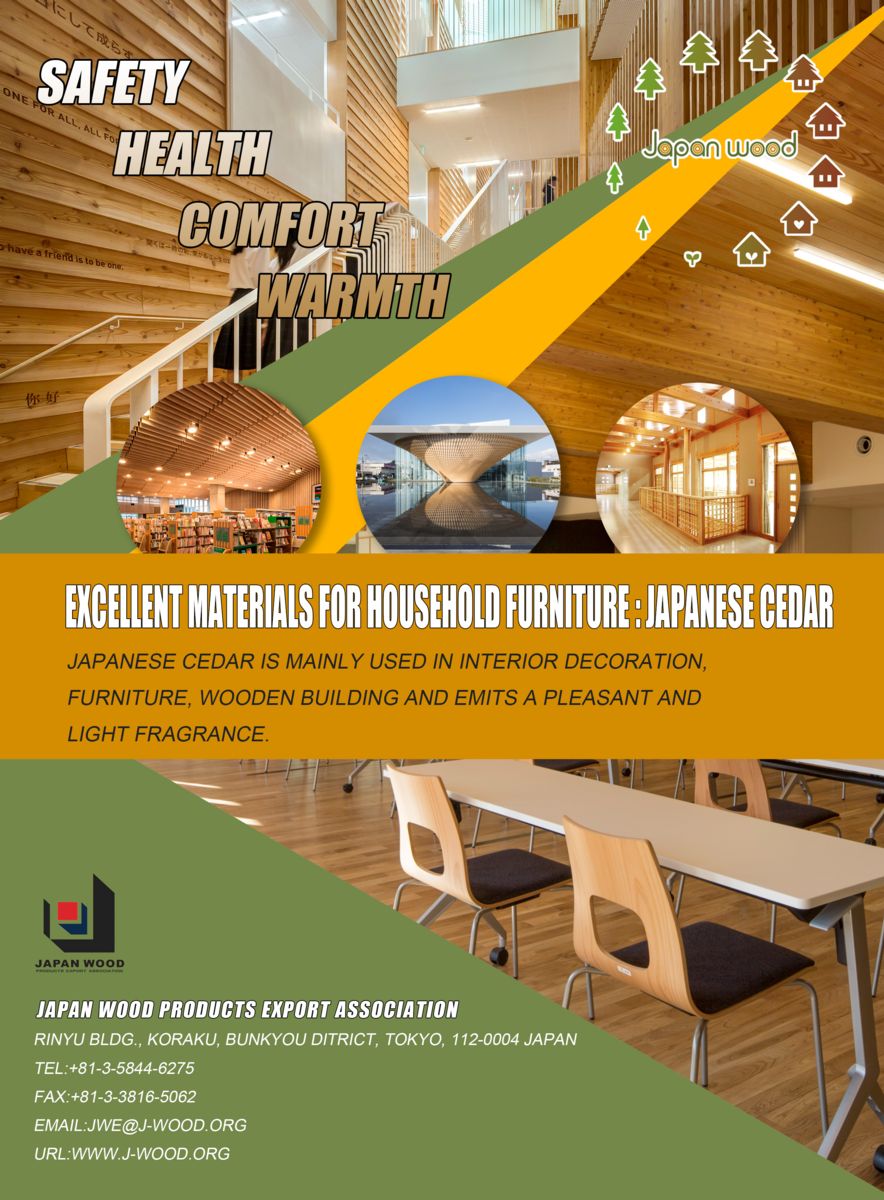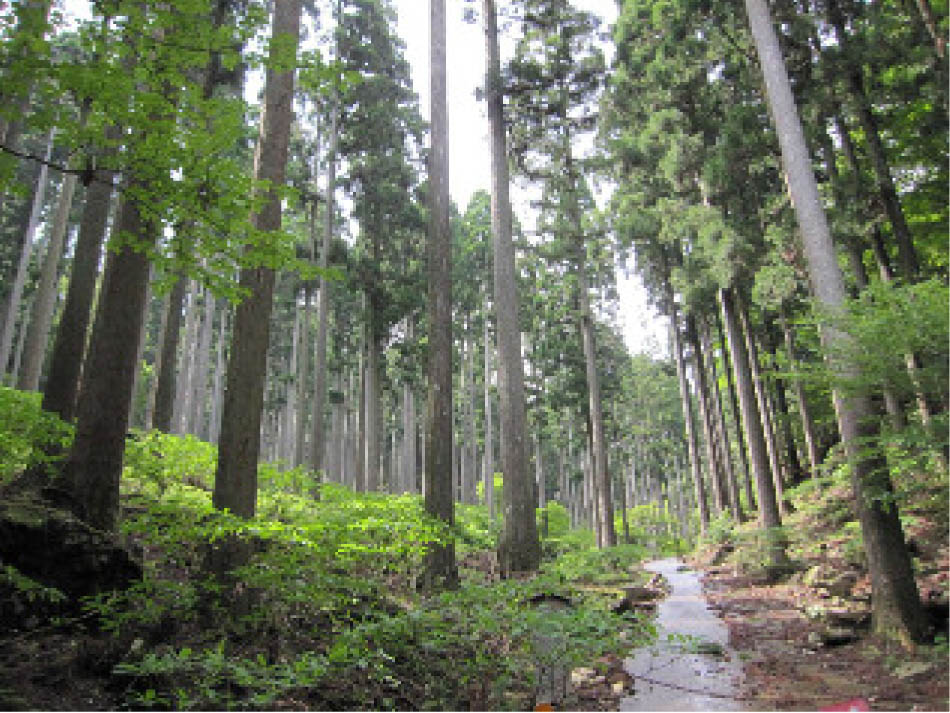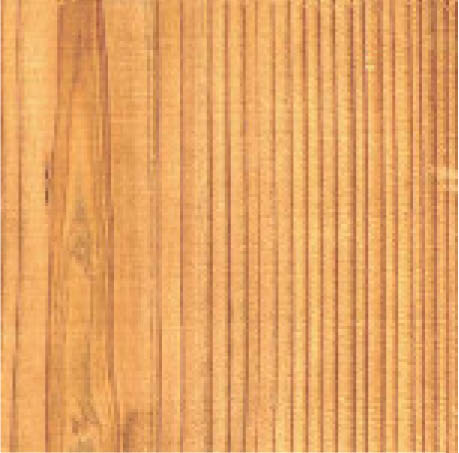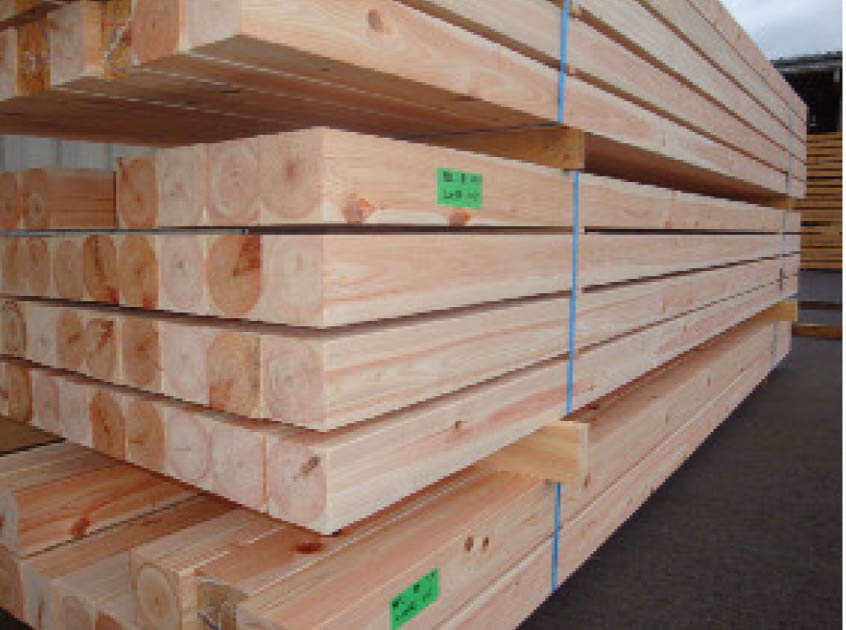Japanese Cedar (Sugi)
ADJapanese Cedar (Sugi)

Sugi
1. Academic and common names
Sugi (Crytomeria japonica D. Don) is an evergreen conifer which belongs to the genus sugi, subfamily sugi under the Cupressaceae family. Included in the sugi subfamily are Tasmanian cedar (Athrotaxis), Chinese fir (Cunninghamia R. Br.), Mizumatsu (Glyptostrobus Endl.), Bald cypress (Taxodium Ricj.), Metasequoia (Metasequoia Miki ex Hu et Cheng), Sequoia (Sequoiadendron Buchholz) and
Taiwanese cedar (Taiwania Hayata).
Its business term in wood distribution and trade is Sugi as pronounced in the country of origin.It is called Japanese cedar in English.
2. Geographic distribution and major producing areas

Sugi is one of the main tree species in
Japan and distributed in Honshu, Shikoku and Kyushu. Planting of Sugi dates back 500 years. The prefectures well known for Sugi production are Akita, Shizuoka, Mie, Kyoto, Nara, Kumamoto, Oita, Miyazaki, and Tottori. Well-established brand names are Akita-sugi, Echigo-sugi, Tenryu-sugi, Owase-sugi, Kitayama-sugi, Yoshino-sugi, Oguni-sugi, Hita-sugi, Obi-sugi and Chizu-sugi.
3. Physiological features
Sugi is a tall evergreen tree. It can grow taller than 40 meters and larger than 2 meters in diameter at breast height. Most trees have straight trunks.
and larger than 2 meters in diameter at breast height. Most trees have straight trunks.
4. Distinct features of wood
There is a distinct color difference between sapwood and heartwood. Sapwood is nearly white whereas heartwood varies from pink to dark reddish brown. The changes from early wood to late wood is rather sharp. With distinct annual rings, the grain is beautiful and warm and smooth to the touch. It has a characteristic faint scent and is attracting attention as a building material good for health.
5. Performance
The average air-dried density is 0.38 g/cm2. It is rather light and soft, therefore easy for processing. The heartwood has moderate preservative quality. It performs well in drying, adhesion, polishing and painting.
6. Main uses
Sugi is a versatile material and used widely for building materials (posts, beams, wall panels, ceiling panels, flooring, etc.), laminated wood, plywood, interior wood, furniture, bridges, ship building, utility poles, packaging and crating.
building materials (posts, beams, wall panels, ceiling panels, flooring, etc.), laminated wood, plywood, interior wood, furniture, bridges, ship building, utility poles, packaging and crating.
7. Resources and log production
According to the statistics as of March 31, 2017, planted Sugi area is 4.44million hectares with 1.9 billion m3 of growing stock. Sugi accounts for 44% of the planted forests and 58% of the growing stock. The log production in 2021reached 12. 92 million m3 or 59.1% of th total.
Rinyu Building, 1-7-12 Koraku, Bunkyo-ku Tokyo, 112-0004 Japan
Japan Wood Products Export Association
TEL +81-3-5844-6275 FAX +81-3-3816-5595

